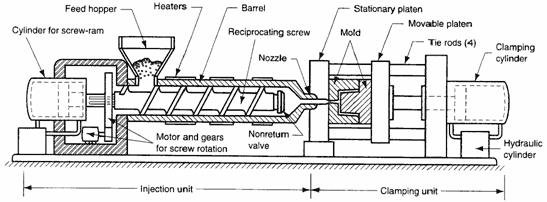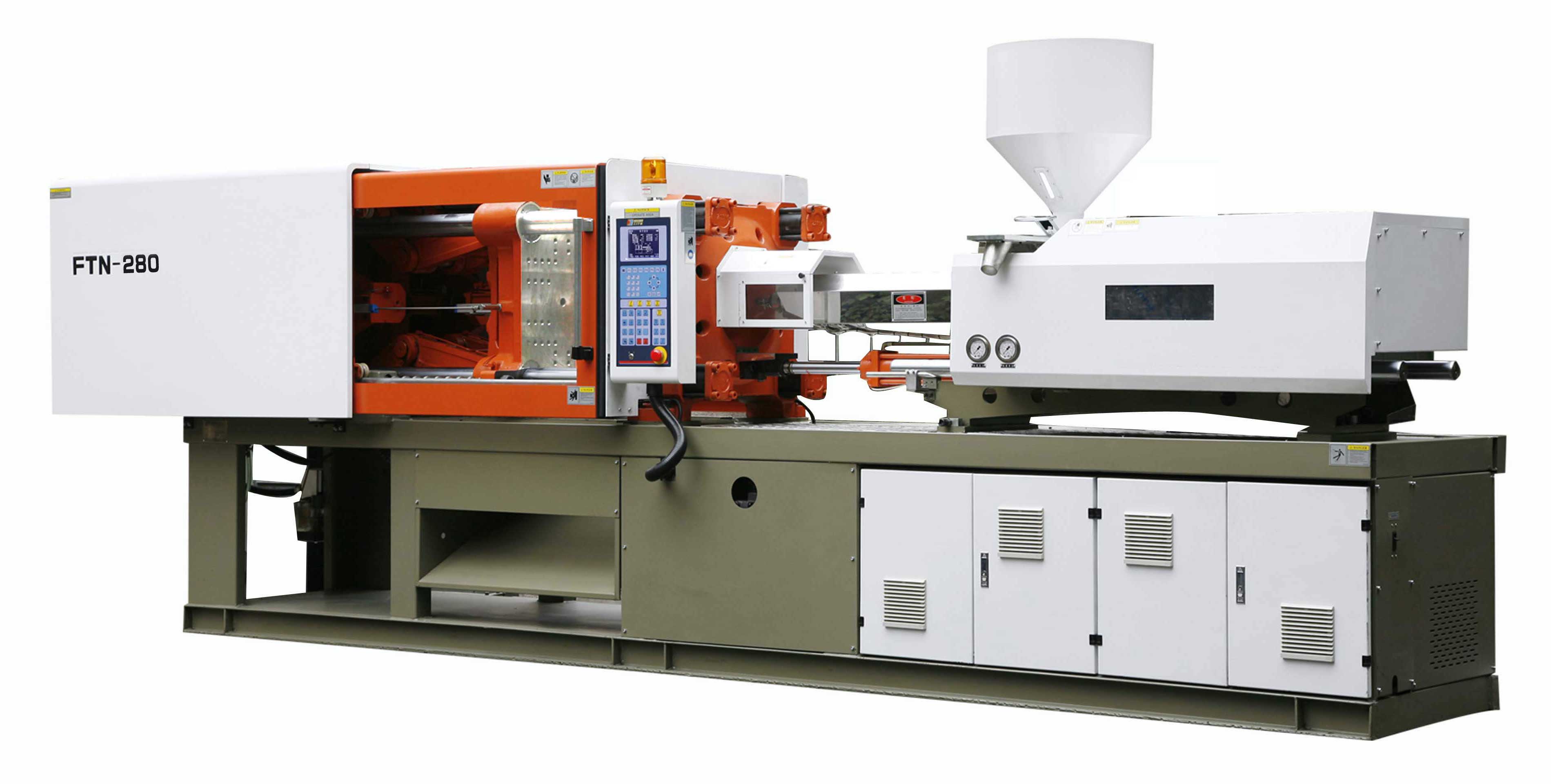To
understand the design considerations for injection molded parts, really you
need to know about injection molding tools and machines. At school we are shown an incredibly basic
line drawing of an injection molding machine.
This image shows what the average non-design punter needs to know. However a designer/engineer needs to to know,
what the machine looks like (so you can spot one and not look like a fool),
what consideration are needed when designing a part for one and therefore what
an injection molding tool (the mold) looks like on the inside and how it works. Combine this and the basic knowledge that hot
plastic is pushed into a mold and cools to the shape and you can design the
part to be able to be made.
Real life injection molding machine
So
to know what an injection molding tool looks like, below are some images of
injection molding machines.
To clarify, the mold is called a tool. These tools can be big or small and simple (simple open, shut design) or very complex, depending on the design of the part. This however is in the hands of the designer. The more simple the tool, the cheaper it is. Therefore knowing how to design a part that can be made in a simple tool is very valuable.
The insides
Above
shows the insides (both core and cavity respectively) of a simple tool. With this tool the part is completely drafted
and there are no undercuts on the part.
When you add undercuts or areas that cannot be drafted then extra parts
must be added to the the tool. These are
called movements. There are different
type of movements, which will be covered more in depth in a later series
focusing on specifically on tools, but these movements add to the tools
cost. The more movements you have, the
more expensive. The tool below has two movements called sliders. The green rods, on the left hand mold go into the holes on the light pink and green blocks on the right hand mold. As the tool closes the blocks are forced to move into position by the angle of the rods, then when the tool opens the blocks slide back out of the way so the part can be ejected. (The grey rods are so that the tool aligns correctly).
So how to have less movements you need the part to have draft angles. Draft angles are needed so the part can come out of the mold when ejected. If you cannot have draft angles on the part (as little as 0.5 degrees can be fine) then you have to have sections that move away to let the part be ejected after it has been molded. Hence being called a movement.
Undercuts
also make getting the part off the mold difficult/impossible in most materials. In some, that give some flex you can use the
bump-off technique (shown below) but otherwise you have to have sections in the
mold that again move away once the part has been molded to allow the part to be
ejected.
This is the last part in the Injection Molding Is Tricky series. There will be more on injection molding tools in a later series coming very soon.






All are very heavy machines but also very effective for their work.
ReplyDeleteMatsui America
This is a well-written article on injection molding tools, I am not a technical guy but I understand the process.
ReplyDeleteThis is very nice blog, I like this a lot i read your blog post. DAKUMAR is one of the leading Plastic Machine Companies, focus on China plastic Injection Molding Machine & equipments.
ReplyDeleteThis comment has been removed by the author.
ReplyDeleteAre your business-to-business ads working for you? If they are not making sales, are they at least generating interest in your company? Are they making an impression on your potential customers by making you stand out in a crowd? If not, then you should take a look at this article and get those ads working hard for you.
ReplyDeletePlastic Injection Mould
The techniques used for the realization of mold inserts are presented, such as lithography process (LIGA), laser micromachining and micro electrical discharge machining (µEDM). Laser Welding
ReplyDeleteThis comment has been removed by the author.
ReplyDeleteIn the process of plastic extrusion, the raw material which is commonly plastic will be fed into a cylinder or heated extruder hollow. Usually, the raw plastic used in this process is in bead form and it can be blended with colorants prior the process of extrusion starts. In some cases, you may find that ultraviolet inhibitors are added to the beads of raw plastic.
ReplyDeleteplastic molding
Thanks for sharing nice information about injection
How Does Plastic Extrusion Work?
ReplyDeleteinjection mold design uk
Thanks for this helpful article,
ReplyDeleteDesktop Casting
What is the difference between plastic moulding, blow moulding and injection moulding?
ReplyDeleteplastic injection molding machine uk
Hi this is good to see that you are providing such great service and you giveing it for free. I love type of blogs that understand the value of providing a quality information. Thanks for sharing it very useful for Help Adya free ad posting website.
ReplyDeleteGood day. I like your blog post. It all appears fantastic. I managed to get here from Yahoo by researching and I can see why. Keep up the good work.
ReplyDeleteplastic molding china | china plastic injection molding | China mold company
I have more for plastic design,you could find more:
ReplyDeletehttp://www.plasticmoulds.net/design
I want to share a testimony on how Le_Meridian funding service helped me with loan of 2,000,000.00 USD to finance my marijuana farm project , I'm very grateful and i promised to share this legit funding company to anyone looking for way to expand his or her business project.the company is UK/USA funding company. Anyone seeking for finance support should contact them on lfdsloans@outlook.com Or lfdsloans@lemeridianfds.com Mr Benjamin is also on whatsapp 1-989-394-3740 to make things easy for any applicant.
ReplyDelete